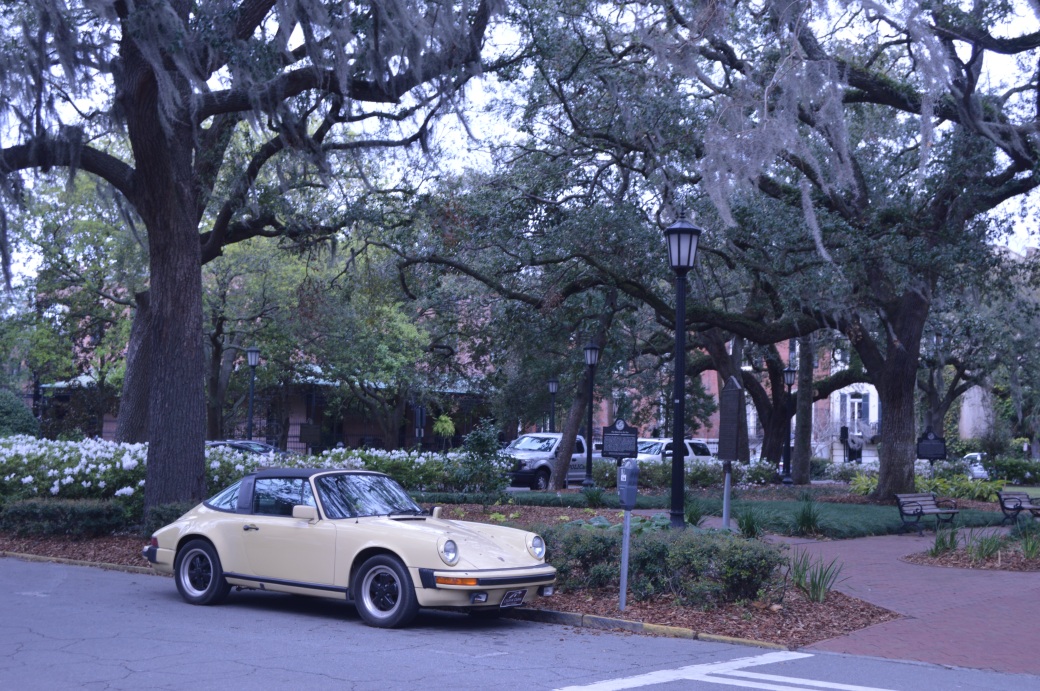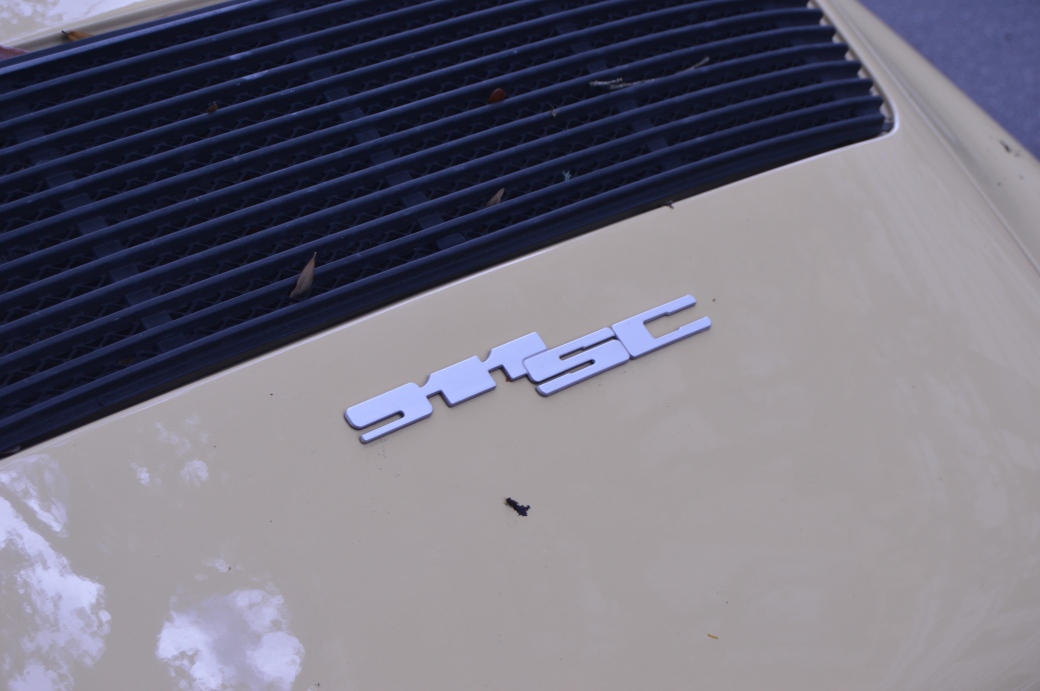
Much like a bumblebee’s ability to fly and the movie Cowboys And Aliens, this car works brilliantly in spite of the fact that it really shouldn’t. Let me explain: Porsche has a reputation for building extremely luxurious and ludicrously capable sports cars (though in recent years, they’ve expanded the brand). But behind the pomp and circumstance, the brand is a little stodgy. Their pièce de résistance, the 911, has been around since 1963, and has been through six successive generations. But if you line them all up next to one another, you’d be hard pressed to say the designers were were clocking into work at all. The 911’s design hasn’t advanced in years, and for reasons we’ll get into in a minute, the car’s engineers are no better. But this particular 911 is something different entirely. This is a 1982 Porsche 911SC Targa.

In case you haven’t guessed from the presence of actual plant life, we’re not in New York City. Nope, this week Forgotten Metal is in Savannah, Georgia: home of Forest Gump, Midnight In The Garden Of Good And Evil and, I assume, some other things that don’t have to do with movies. Savannah is lovely, which is why it’s appropriate that we found this particular version of Porsche’s pride and joy. The 911 was conceived as a replacement for the 356, and was actually designed by Ferdinand Alexander, or “Butzi” to his friends. Alexander was the son of the company’s founder, Ferry Porsche. Erwin Kommenda, who designed the aforementioned 356 and the original VW Beetle, also had a hand in the 911’s design.

The 911’s real party piece is its engine, or rather, the location of it. Peel away the layers of the car’s history and you find that the 911’s beginnings are actually rooted in the Volkswagen Beetle, which means its engine is mounted behind the rear wheels. This, not surprisingly, made the car quite a handful when it came to cornering. Effectively, the weight over the rear end acted as a pendulum, and contributed to a phenomenon known as “snap oversteer.” Here’s an explanation that uses fun visual aids, but the shorthand is that snap oversteer makes a car suddenly spin out because the rear tires have passed the limits of adhesion, causing them to lose traction and turn the car into Diana Vishneva. The second generation 911 arrived in 1989 with a revised trailing arm suspension (we looked at those a couple weeks ago in the BMW 3.0CS) that somewhat remedied the problem. Every 911 since has added further revisions and slowly pushed the engine towards the middle of the car, which many see as a bastardization of the 911’s unique character, but I see as a sheepish admission that Porsche engineers put the engine in the wrong place and were too embarrassed to change it.

So the 911 is a car typified by a stubborn adherence to tradition. The design looks the same today as it did in 1964 because, Porschephiles say, it was great in 1964. The engine’s where the trunk normally is because that’s the way it’s always been. Why fix what isn’t broken? I think that’s why I like this particular version of the 911 so much: it’s the rascal of the family. This is a targa, which means it falls somewhere between a coupe and a convertible. The 911 Targa has a fabric insert directly over the driver and passenger seat that can be removed to let the sunshine in (as this extremely British man will demonstrate). What you’re left with is a sort of half-convertible. Which begs the question: why? Supposedly it was developed because some paranoid employees at Porsche were scared the US would ban all convertibles for some reason. The Targa was a way to thread that loophole. In the event of a rollover, the big metal support hoop would protect the driver’s noggin in a way that a conventional convertible couldn’t. The convertible ban never ended up happening, but the they kept building the Targa: a precaution for a never-present danger.

The Targa was first offered in 1967, and the early cars with the “soft windows” (read: plastic inserts) are actually quite valuable today. Through the 1990s and 2000s Porsche offered a 911 with a glass roof that they called a “Targa,” but they weren’t fooling anyone. Say it with me now: real targas have removable vinyl roofs. Catchy, right? Thankfully, in 2014, Porsche answered gearheads’ prayers and started selling a 911 Targa in the traditional mold. The electric roof operation alone is a production to behold. This Georgian 911 Targa is the top-of-the-line “SC” model, which stands for “Sport Carrera.” That means it has a 3.0 liter flat-six engine. It developed a little over 200 horsepower when it was new, and is mated to a five speed manual transmission.

The Targa version of the 911 is kind of like the penny: an illogical oddity produced by a organization known for, or even defined by, its rationality. It’s proof that even the most conservative German company can let one slip through the cracks. This one just so happens to have a Gothic buttress appendage behind the front seats. 911 Targas aren’t the best 911s to drive because of their increased weight, nor are they the best outright convertibles because, as we’ve mentioned, they’re only half-convertibles. And maybe that’s the real takeaway. The 911 Targa is not a sports car. It’s a novelty. It’s a car you can enjoy as much in concept as you do in practice. Because every once in awhile, it’s okay to let one slip through the cracks.

Additional Thoughts:
- Porsche also offered a Targa model on their 912, which was identical to the 911 except it had a flat-four engine instead of a flat-six.
- Other famous Targas include the Triumph Stag and the Pontiac Solstice Coupe (don’t let the name fool you, that roof panel is removable!)